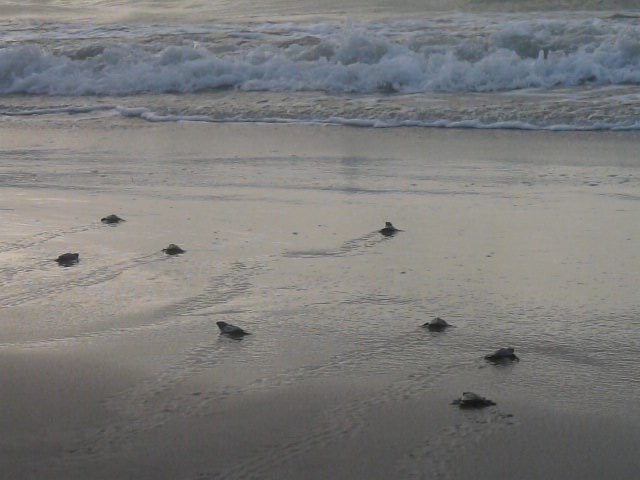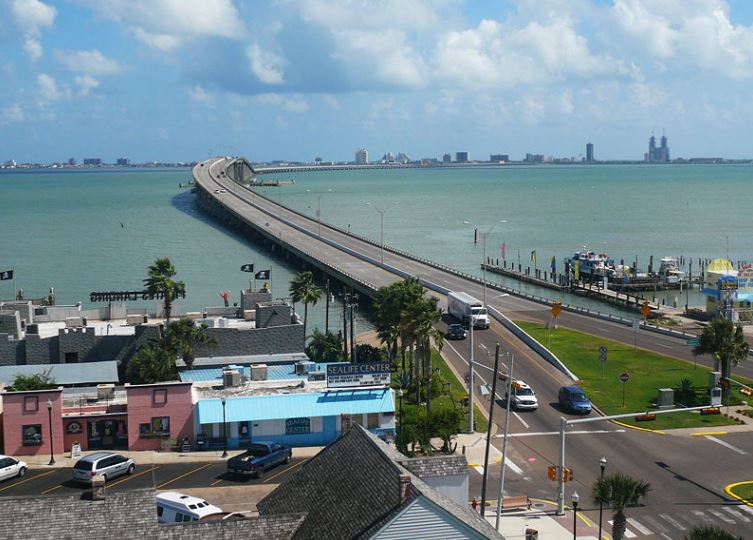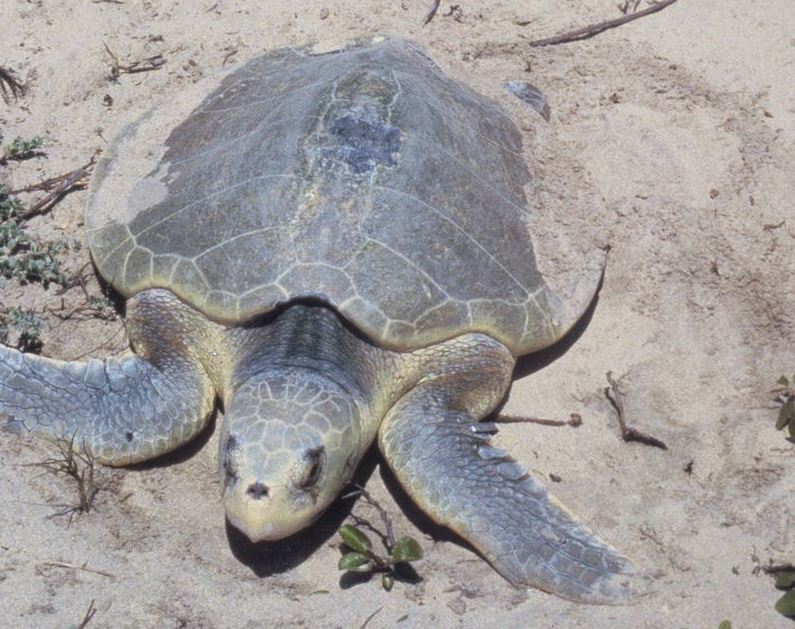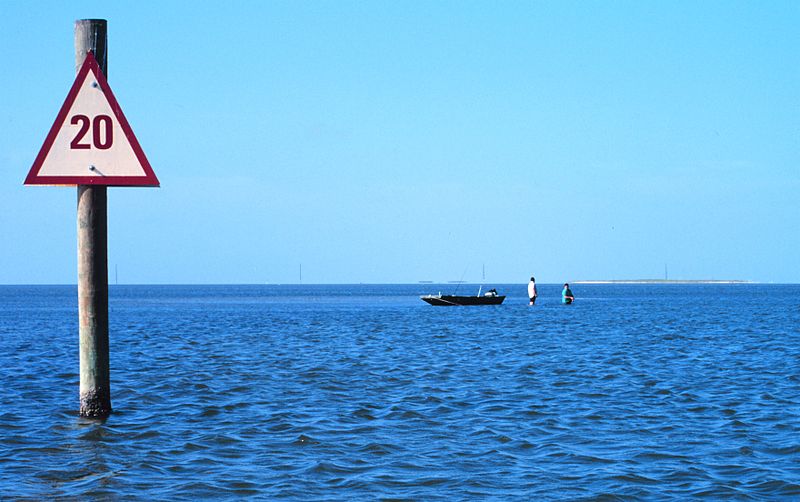Padre Island National Seashore protects the coastline, dunes, prairies, and wind-tidal flats between the Gulf of Mexico and the Laguna Madre. Its vast area encompasses 130,434 acres, which is the world’s longest undeveloped stretch of a barrier island and offers a variety of flora, fauna, and recreational opportunities. The stunning natural habitat is the most significant nesting beach in the United States for the world’s most endangered sea turtle, the Kemp’s ridley. Since 1978, the park has participated in an international, multi-agency effort to save the Kemp’s ridley sea turtle. Additionally, the park participates in global efforts to recover the populations of four additional threatened and endangered species of sea turtles.
The world’s longest uninhabited barrier island is North Padre Island. With 65.5 miles (105.4 km) of Gulf sand, the national seashore measures 70 miles (110 km) in length. The Laguna Madre, a well-known location for windsurfing, is one of the many natural beaches, dunes, and tidal flat habitats that PAIS is home to. It is in sections of the counties of Kleberg, Kenedy, and Willacy, with much of the land area being in Kenedy County.
A Short Historical Background
Padre Island has been a part of four separate nations’ possessions. Spain was the first, and it held control of Padre Island from the time it arrived in the New World until the Mexican Revolution of 1820. Padre Island was owned by Mexico following the revolution from 1821 to 1836 when the newly established Republic of Texas seized control of the region between the Nueces River and the Rio Grande. The Republic of Texas owned Padre Island up until the United States took control of the region after the War with Mexico (1845–1848). The island has gone by a few names over the years, with Padre Island being the most recent. It has also gone by the names “Isla de los Malaguitas” and “la Isla Blanca”.
Basic Information of PAIS Destination
South Padre Island and Padre Island National Seashore are two distinct locations separated by more than one hundred miles. South Padre Island and Padre Island National Seashore are occasionally confused; however, they are two quite separate places. For a smooth tour, it is best to get a visitor’s guide in visiting these breathtaking sceneries.
The Padre Island National Seashore is a national park with roughly 70 miles of unspoiled beaches and natural habitat that is situated not far from Corpus Christi. A tourist area called South Padre Island is close to Brownsville and has many lodging options, nightclubs, and gift shops. The two locations are miles apart and located at the opposite ends of Padre Island, a lengthy barrier island.
The park, which is on North Padre Island, is not easily accessible by car from South Padre Island. The only route to drive from North Padre Island to South Padre Island is to travel inland, down Highway 77, and back out to the south end of the island, a driving excursion that takes 3–4 hours. Mansfield Channel, an artificial waterway, passes across Padre Island near the southern end of the national park.
The Best Time to visit PAIS
Winter to spring is the ideal seasons to visit the island. While the Gulf of Mexico is chilly at this time of year, the weather on land is just right for a sunny winter getaway. The island is one of the favorite winter destinations in Texas because of its warm winters. On the shore, summers are hot and muggy.
Additionally, this is hurricane season, so unexpected thunderstorms are possible. Although the water is perfect for swimming, you need to use a lot of sunscreen cream to prevent sunburn. You can see a sea turtle hatchling released during the summer.
The fall is another fantastic season for travel because of the pleasant weather, although hurricanes should be avoided. Overall, the island is a fantastic year-round vacation spot for Gulf Coast nature lovers.
The National Seashore
It will take you five kilometers of grassland driving to get to the Malaquite Pavilion (mile marker 0). You can find a variety of well-known National Park Service events here, including ranger presentations, publications about the local flora and fauna, gifts, and mementos. From the Pavillion, a lengthy promenade leads to the beach. Alternately, you can drive directly onto the sand and move south.
The National Seashore is working on several projects to protect habitats, including those of the Kemp’s ridley sea turtle in addition to the beach. The presence of this kind of turtle has been successfully restored thanks to this well-known national project. Both the nesting places on the beach and the hatchlings’ journey to the water are preserved by the staff and volunteers. Going early in the morning to see the researchers release the turtle hatchlings and observe them as they make their way over the sand to the water is a popular pastime throughout the summer.
Beach Driving
Yes, it is a well-known fact that you can drive on the beaches of Texas and that’s especially true on South Padre Island. If you plan to drive along the shoreline away from the ranger station while visiting the National Seashore, you must be independent and have a sand-worthy vehicle. Once you exit the pavilion, there are no petrol stations, snack stores, or water fountains. Before leaving, bring everything you’ll need. For the first five miles, you can drive a typical 2-wheel drive vehicle. After that, you’ll need a vehicle or jeep with a four-wheel drive. Be ready to drive on sand and to get yourself unstuck should you reach a spate of soft sand because the further down the shore you go, the less likely it is that you will have any cell service. Understand the tidal times. You don’t want to get swept away during high tide because the beach can be quite small in certain places. Be prepared to turn your car around and travel back up north. You won’t be turning back once the sand becomes saturated and the water rises.
Camping, Hiking, and Boating on the Island
Both North Beach and South Beach allow camping right on the sand. The campsites in the other campgrounds are reserved. To select a beach campsite, you can opt to drive on either the North Beach or the South Beach side. Before you pitch your tent, stop at the ranger’s office, and receive a tide chart. To keep safe, camp between the sand dunes and the beach. Ask a park ranger if you have any queries; they are quite helpful.
The entire island can be explored, however, there aren’t many designated pathways in the park for guests. The Grasslands Nature Trail is one of the simpler signposted routes. It is close to the park’s entrance and is paved, making it ideal for children of all ages. The walk, which is less than a mile long, is the ideal place to see how the tidal flats resemble a marsh. The wind tidal flats are abundant with sea life, including crabs, shrimp, minnow fish, and algae.
Boat launching is permitted at the designated ramps in Laguna Madre. Bird Island Boat Ramp and Yarborough Pass Boat Ramp are the two that are located within the park. In the Gulf seas, only soft-sided boats may be launched. Jet skis and other personal watercraft are prohibited. Fishing is permitted, but you must have a license with a saltwater stamp. In various seasons, visitors can catch catfish, trout, anglers, and much more fish.






